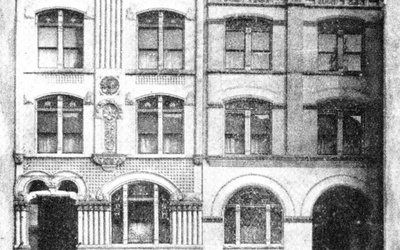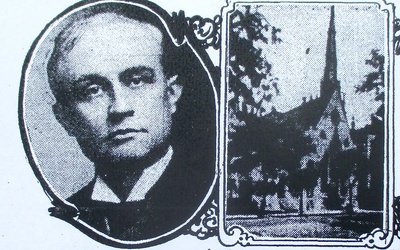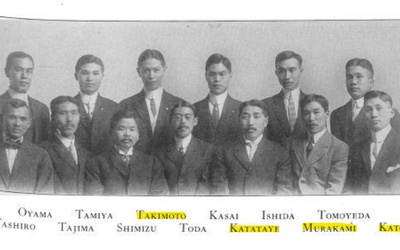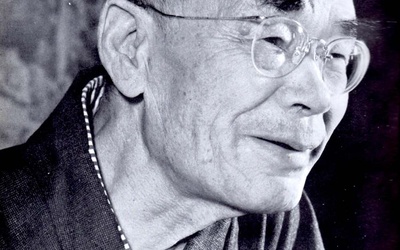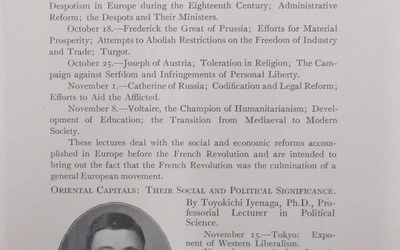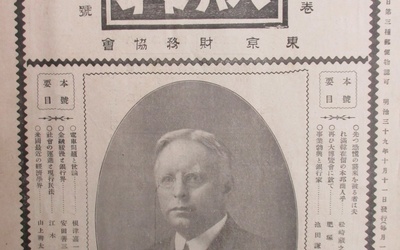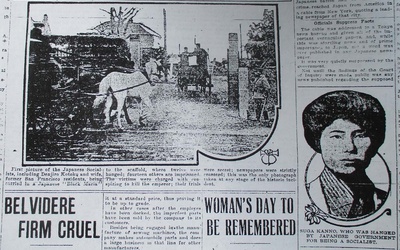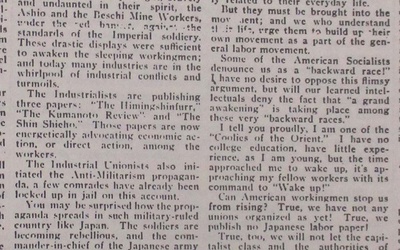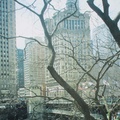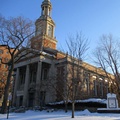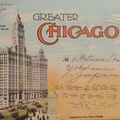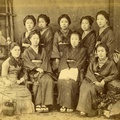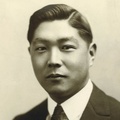
Takako Day
@takako70Takako Day, originally from Kobe, Japan, is an award-winning freelance writer and independent researcher who has published seven books and hundreds of articles in the Japanese and English languages. Her latest book, SHOW ME THE WAY TO GO HOME: The Moral Dilemma of Kibei No No Boys in World War Two Incarceration Camps is her first book in English.
Relocating from Japan to Berkeley in 1986 and working as a reporter at the Nichibei Times in San Francisco first opened Day’s eyes to social and cultural issues in multicultural America. Since then, she has written from the perspective of a cultural minority for more than 30 years on such subjects as Japanese and Asian American issues in San Francisco, Native American issues in South Dakota (where she lived for seven years) and most recently (since 1999), the history of little known Japanese Americans in pre-war Chicago. Her piece on Michitaro Ongawa is born of her love of Chicago.
Updated December 2016
Stories from This Author
Who Taught the Word skebe to Americans?: Skebe in Chicago's Japanese American Community - Part 1
Oct. 10, 2021 • Takako Day
Hiroichiro Maedako, a proletarian writer who came to Chicago in 1907, once wrote in one of his articles the following confession: “When I was walking on Armour Avenue, a woman called out to me, ‘Hello, honey boy, come on in—you want skebe?’From the beginning of the encounter, I was dumbfounded by this flatly fired off Japanese word: skebe.”1 Then in 1910, while in a carriage returning to his hotel, Kasho Kono passed four or five Japanese women riding in a …
Chapter 4: Misaki Shimazu and The JYMCI at 747 E. 36th Street
Aug. 8, 2021 • Takako Day
In 1917, Shimazu visited the New York Japanese community to secure funding to purchase the property.1 It was variously reported that Shimazu raised $11,0002 or $18,0003, but these donations came mainly in small amounts from friends of the Central YMCA of Chicago.4 Notably, William J. Parker, the General Secretary of the Central YMCA, donated $4,000 to the JYMCI in May 1918. Parker agreed “to deed the property to such corporation as might be formed or selected by the JYMCI, whenever …
Chapter 3: Misaki Shimazu and the JYMCI
Aug. 1, 2021 • Takako Day
The Japanese YMCA that Shimazu had taken over in 1908 had yet to realize its mission, which was to better the lives of the Japanese immigrants scattered around Chicago, in the spirit of Christianity.1 For the next thirty years, the Japanese YMCA endured many twists and turns, changing its location and name several times, but it eventually became one of the main foundations of Chicago's Japanese community. The Japanese YMCA's thirty year history can be divided into six periods. The …
Chapter 2: Misaki Shimazu — Birth of the Japanese Christian Community in Chicago
July 25, 2021 • Takako Day
According to Misaki Shimazu, there were four stages of activity among the Japanese Christians in Chicago: the Fujita era, the Baptist days, the Confusion period, and the Separation and Independence era.1 The first period, the Fujita era, was from July 1899 to April 1903, when Toshiro Fujita was the Japanese Consul in Chicago. A few Japanese met at Consul Fujita’s home twice a month to study Christianity. Consul Fujita was a Christian2 and he managed all of the correspondence of …
Chapter 1: Introduction
July 18, 2021 • Takako Day
It is well known that prewar Chicago had no “Japan town.” Was it simply because the Japanese population before 1940 was too small? Or was there a specific reason that Chicago did not establish a center for Japanese immigrants? Jesse F. Steiner spent seven years (1905-1912) as a teacher at North Japan College in Sendai.1 He was subsequently trained under Robert Park and lectured in sociology at the University of Chicago in 1915 and 1916.2 In his thesis, The Japanese …
Toyokichi Iyenaga: Japanese Publicist in Chicago - Part 3
March 1, 2021 • Takako Day
Read Part 2 >> With a new sense of confidence, Iyenaga became more aggressive in negotiating his contract renewals with the University of Chicago and made the following demands: “that between Oct 1st and June 23rd each year the University shall have exclusive control of my time, with the annual salary of $3000. I beg, however, to attach to this acceptance, the following reservation to wit: that the University will commission me this year, or the next, to visit for …
Toyokichi Iyenaga: Japanese Publicist in Chicago - Part 2
Feb. 22, 2021 • Takako Day
Read Part 1 >> In early 1901, Toyokichi Iyenaga received a letter from Edmond J. James, Professor of Public Administration and Director of the University Extension Division at the University of Chicago,1 inquiring about Iyenaga’s plan for his U.S. tour.2 3. Toyokichi Iyenaga Iyenaga was born in 1862 to a samurai family in Fukuoka. He was taught English at missionary schools in Kumamoto and Kyoto and came to the U.S. to study at Oberlin College in November 1884. At Oberlin, …
Toyokichi Iyenaga: Japanese Publicist in Chicago - Part 1
Feb. 15, 2021 • Takako Day
Introduction: Chautauqua “Know Japan! Understand Japan!” Educating Americans about Japan was one of the most important roles assigned to Japanese immigrants, especially for those who were college graduates, equipped with near-native English fluency, and had arrived in the U.S. over 120 years ago. Their strong will and zeal, which enabled them to become professional lecturers and to stand up before crowds of strangers and give speeches on Japan and the Japanese, must have been unimaginably grand in those days, compared …
Takeshi Takahashi’s Chicago - Part 4
Oct. 16, 2020 • Takako Day
Read Part 3 >> 6. Takahashi and Josephine Conger Kaneko As a member of the IWW, Takahashi also had contacts with the Socialist Party, plus he spent time with known socialist, Kiichi Kaneko. Takahashi visited Kaneko with his friend, Maedako and his cousin, Shizuo Tatsuno, the younger brother of Fumio Tatsuno. Shizuo arrived in Chicago in fall 1906 and worked at Shichiro Yamada’s tea store with Takahashi. Kaneko and his wife, Josephine, began publishing a feminist magazine entitled, The Socialist …
Takeshi Takahashi’s Chicago - Part 3
Oct. 9, 2020 • Takako Day
Read Part 2 >> 5. Emma Goldman, Kotoku and Takahashi In 1907, Mother Earth introduced Kotoku’s new publication, Heimin Shimbun, which he started in Japan, right after he returned from the U.S. in 1906. The announcement they ran read as follows: “A daily revolutionary socialist paper, Heimin Shimbun, is out at Tokyo. If some Japanese American comrade will kindly offer to give us an idea of its contents we shall be glad to send him copies.”1 It may have been …

